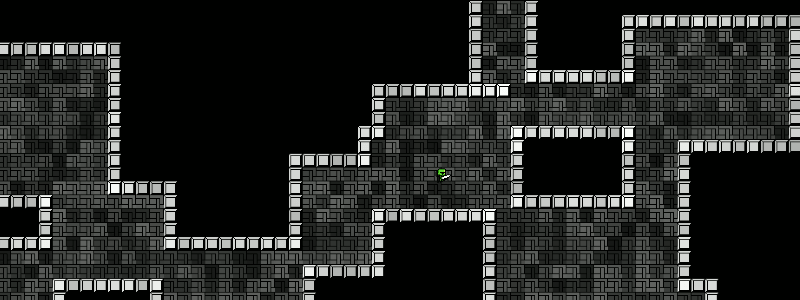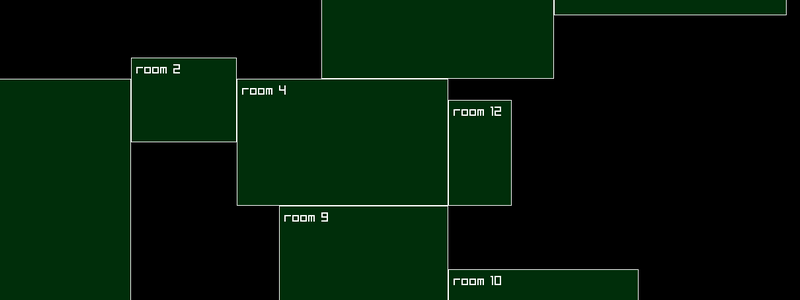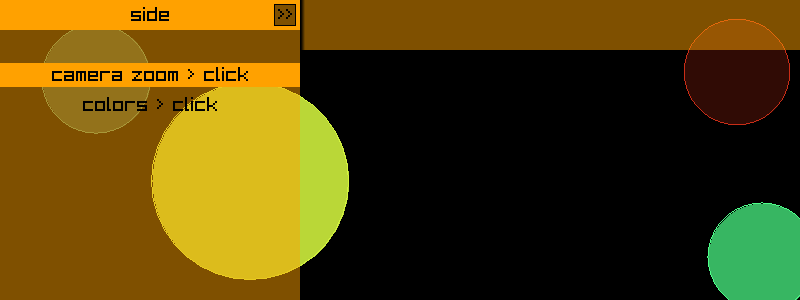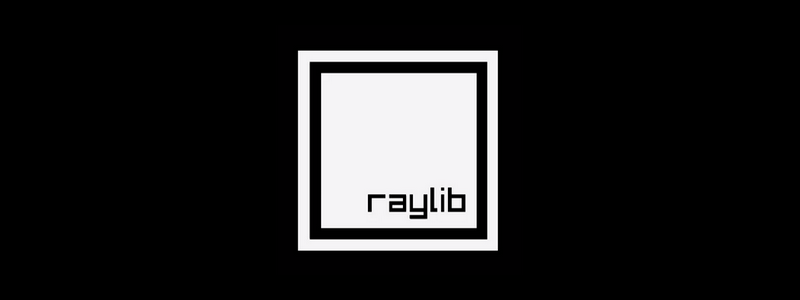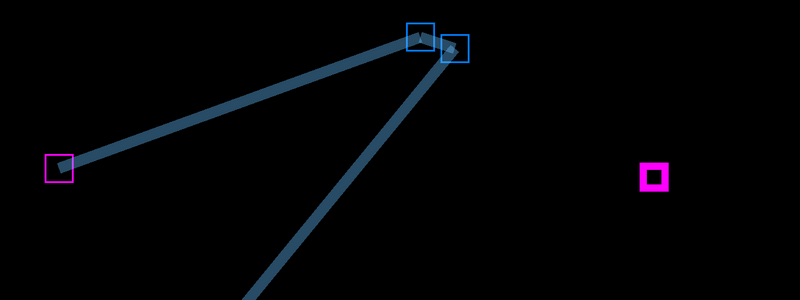Moving Space/Shooting Stars Background > 2D
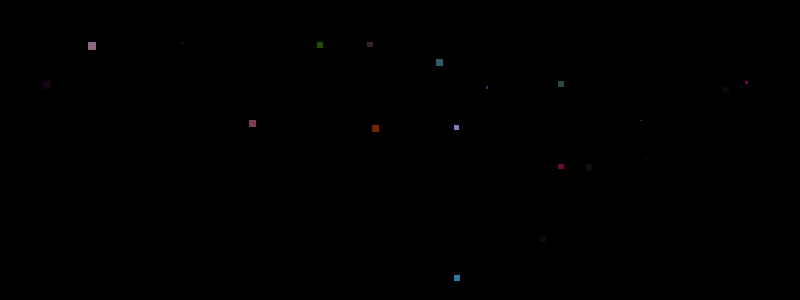
Contents
Make a moving space background
Quick way to create moving space background with random movement, color fade and direction change. If you would prefer to use sprites (images) then draw textures in place of the rectangles. View on Github
Before you start
I am a self taught Go programmer and do it as a hobby, the code below is my own interpretation of how to do something, probably not the only way or the best way. This is intended as a resource to learn some basic Raylib and Go game dev skills. If you want to use any of the code anywhere else, feel free to do so.
Code
package main
import (
"math/rand"
rl "github.com/gen2brain/raylib-go/raylib"
)
/* MORE RAYLIB GO EXAMPLES ARE AVAILABLE HERE:
https://github.com/unklnik/raylib-go-more-examples
*/
var (
numStars = 200 // NUMBER OF STARS TO DRAW
stars []blok
direc int // DIRECTION
timer int32 // CHANGE DIRECTION TIMER
fps = int32(60) // FRAMES PER SECOND
colorsOn bool // COLORS ON/OFF
scrW, scrH int
maxVel = float32(10) // MAX SPEED FOR DETERMINING X Y MOVEMENT
velX, velY float32 // X Y SPEED
)
/*
direc = direction
numbers correspond to direction of stars movement
numbers start at 1 and move clockwise
for example 2 = UP, 7 = DOWN & LEFT, 3 = UP & RIGHT, 4 = RIGHT
1 2 3
8 4
7 6 5
*/
type blok struct { // BLOK STRUCTS THAT CONTAIN THE COLOR & POSITION
col rl.Color
rec rl.Rectangle
fade float32
}
func main() {
rl.InitWindow(0, 0, "stars background - raylib go - https://github.com/unklnik/raylib-go-more-examples")
scrW, scrH = rl.GetScreenWidth(), rl.GetScreenHeight() // GET SCREEN SIZES
rl.SetWindowSize(scrW, scrH) // SET WINDOW SIZE
//rl.ToggleFullscreen() // UNCOMMENT IF YOU HAVE DISPLAY ISSUES WITH OVERLAPPING WINDOW BARS
rl.HideCursor() // HIDES MOUSE CURSOR
makeStars() // FUNCTION MAKE STARS SEE END OF CODE
direc = rInt(1, 9) // CHOOSE INITIAL MOVEMENT DIRECTION
velX = rF32(1, maxVel) // FIND RANDOM X SPEED
velY = rF32(1, maxVel) // FIND RANDOM Y SPEED
timer = rI32(2, 8) * fps // SET TIMER
camera := rl.Camera2D{} // DEFINES THE CAMERA
camera.Zoom = 1.0 //SETS CAMERA ZOOM
rl.SetTargetFPS(fps) // NUMBER OF FRAMES DRAWN IN A SECOND
for !rl.WindowShouldClose() {
upStars() // FUNCTION TO UPDATE TIMER, MOVEMENT & FADE
if rl.IsKeyPressed(rl.KeySpace) {
colorsOn = !colorsOn // TURN COLORS ON/OFF WITH SPACE BAR
}
rl.BeginDrawing()
rl.ClearBackground(rl.Black)
rl.BeginMode2D(camera)
for i := 0; i < len(stars); i++ { // RANGE OVER SLICE OF STAR BLOKS & DRAW
if colorsOn { // DRAW COLOR STARS
rl.DrawRectangleRec(stars[i].rec, rl.Fade(stars[i].col, stars[i].fade))
} else { // DRAW WHITE STARS
rl.DrawRectangleRec(stars[i].rec, rl.Fade(rl.White, stars[i].fade))
}
}
rl.EndMode2D()
rl.DrawText("press space on/off colors", 8, 12, 20, ranCol()) // TEXT FLASHING COLOR EFFECT
rl.DrawText("press space on/off colors", 9, 11, 20, rl.Black) // TEXT BLACK SHADOWN
rl.DrawText("press space on/off colors", 10, 10, 20, rl.White) // TEXT
rl.EndDrawing()
}
rl.CloseWindow()
}
func upStars() {
timer-- // DECREASE TIMER
if timer <= 0 {
direc = rInt(1, 9) // CHOOSE NEW DIRECTION
velX = rF32(2, maxVel) // CHOOSE NEW X SPEED
velY = rF32(2, maxVel) // CHOOSE NEW Y SEEPD
timer = rI32(2, 8) * fps // SET NEW TIMER
}
for i := 0; i < len(stars); i++ { // RANGE OVER SLICE OF STAR BLOKS & UPDATE
stars[i].fade -= 0.01 // FADE OUT
if stars[i].fade <= 0 { // IF FADE LESS THAN OR EQUALS ZERO SET NEW FADE
stars[i].fade = rF32(0.5, 0.9)
}
switch direc { // MOVE STAR REC ACCORDING TO CHOSEN DIRECTION
case 1: //UP LEFT
stars[i].rec.X -= velX
stars[i].rec.Y -= velY
case 2: //UP
stars[i].rec.Y -= velY
case 3: //UP RIGHT
stars[i].rec.X += velX
stars[i].rec.Y -= velY
case 4: // RIGHT
stars[i].rec.X += velX
case 5: //DOWN RIGHT
stars[i].rec.X += velX
stars[i].rec.Y += velY
case 6: //DOWN
stars[i].rec.Y += velY
case 7: //DOWN LEFT
stars[i].rec.X -= velX
stars[i].rec.Y += velY
case 8: //LEFT
stars[i].rec.X -= velX
}
// IF STAR REC X IS OVER SCREEN BORDER LEFT MOVE TO SCREEN BORDER RIGHT
if stars[i].rec.X < 0 {
stars[i].rec.X = float32(scrW)
}
// IF STAR REC IS OVER SCREEN BORDER RIGHT MOVE TO SCREEN BORDER LEFT
if stars[i].rec.X > float32(scrW) {
stars[i].rec.X = 0
}
// IF STAR REC Y IS OVER SCREEN BORDER TOP MOVE TO SCREEN BORDER BOTTOM
if stars[i].rec.Y < 0 {
stars[i].rec.Y = float32(scrH)
}
// IF STAR REC IS OVER SCREEN BORDER BOTTOM MOVE TO SCREEN BORDER TOP
if stars[i].rec.Y > float32(scrH) {
stars[i].rec.Y = 0
}
}
}
func makeStars() {
maxSize := float32(8) // MAXIMUM SIZE OF RECTANGLE WIDTHS
for i := 0; i < numStars; i++ { // FILLS THE STARS SLICE
// MAKE EMPTY BLOK STRUCT
newBlok := blok{}
// CHOOSE RANDOM COLOR SEE FUNCTION END OF CODE
newBlok.col = ranCol()
// SET RANDOM FADE/OPACITY
newBlok.fade = rF32(0.5, 0.9)
// CHOOSE RANDOM SIZE OF RECTANGLE SIDES
width := rF32(1, maxSize)
// CREATE THE RECTANGLE
newBlok.rec = rl.NewRectangle(rF32(0, float32(scrW)), rF32(0, float32(scrH)), width, width)
// ADD TO SLICE
stars = append(stars, newBlok)
}
}
// RETURNS A RANDOM INTEGER 32
func rI32(min, max int) int32 {
return int32(min + rand.Intn(max-min))
}
// RETURNS A RANDOM FLOAT 32
func rF32(min, max float32) float32 {
min2 := float64(min)
max2 := float64(max)
return float32(min2 + rand.Float64()*(max2-min2))
}
// RETURNS A RANDOM COLOR
func ranCol() rl.Color {
return rl.NewColor(uint8(rInt(0, 256)), uint8(rInt(0, 256)), uint8(rInt(0, 256)), 255)
}
// RETURNS A RANDOM INTEGER FOR USE IN RANDOM COLOR ABOVE
func rInt(min, max int) int {
return min + rand.Intn(max-min)
}
Video
Want to give it a Go?
To start making games with Go and Raylib you will need:
- Go - https://go.dev/
- TDM-GCC - https://jmeubank.github.io/tdm-gcc/
- Git - https://git-scm.com/downloads
- Go Bindings for Raylib - https://github.com/gen2brain/raylib-go
- Visual Studio Code - https://code.visualstudio.com/
You can, of course, use other code editors however VS Code is my own personal preference

